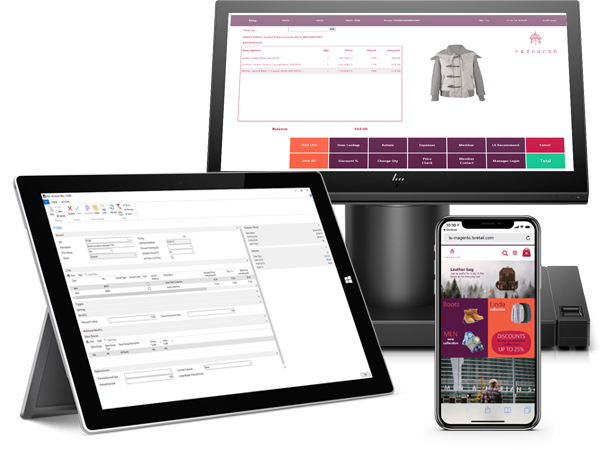The apparel industry is one of the most challenging industries of all time. It demands innovation, creativity, and experiments every now and then. Fashion changes every season, maybe even quicker than them. Apparel manufacturers need to adopt extensive technology to support and coordinate their customers’ dynamic changes. Manufacturers usually rely on collections of different Garment Software systems. This is where the risk lies; relying on disparate systems fosters a high risk of data loss. In the apparel industry, your production massively depends upon the market data and exactly what customers demand these days. An in-fashion thing is most likely to make you a lot more profit than an out-of-fashion item. Modern customers get bored easily, making it harder to satisfy them. ERP Software for Garment Manufacturing Company which supports robust AI-driven tools, Business Intelligence tools, finance management, vendor management, and more. The apparel and textile manufacturing industry become even more challenging, especially when it comes to the production part where things start getting more complex. Furthermore, an expanding global supply chain makes it difficult to maintain product control. There are certain challenges commonly faced by the garment industry. Challenges in Apparel Manufacturing Industry A legacy solution with different workarounds cannot offer a unified end-to-end solution to cope with modern challenges in the apparel and textile manufacturing industry. It eventually leads to effort duplication, slower response, and unnecessary workload. There are some common challenges that the apparel industry typically comes across such as: Raw Material Sourcing Issues When it comes to raw materials, the apparel industry has to face a lot of problems. Manufacturers rely heavily on the supply for the required color, texture, and type of fabric sourcing. Sometimes lack of fabric knowledge and lack of stock availability hand out raw material issues. Vendors often supply poor quality or wrong products causing supply chain and production disruptions. Issues with Inventory Management It is important to track your inventory, preferably live, as it defines how much stock is needed and how much goes to waste. Inefficient inventory management adds costs and waste. Many manufacturers, however, despite knowing this, prefer outdated inventory management methods such as Excel. They usually write down the details on a piece of paper and use manual methods to track the items. Production Delays Production delays are very common in apparel manufacturing and can occur due to many factors such as human errors, slow production, wrong raw material, lack of transparency, using outdated technology, disparate Garment Software systems, and so on. Order Processing Difficulties The apparel order passes through a lengthy step-by-step process. From the beginning to the end, the product demands quality approval. There are various challenges garment manufacturers go through while order processing. Half-baked products lying in the warehouse shift to the following jobber. Sometimes, improper follow-ups with jobbers cause production delays. Garment Defects Garment defects are also one of the most common issues an apparel manufacturer comes across. After completing a product, certain defects may reside such as loose buttons, holes, discoloration, stains, inappropriate trimming, loose threads, poor ironing, and so on. Since these challenges are going to follow the manufacturers for years to come, the only solution is to embrace Digitalization in your business. A Garment Software like Dynamics 365 which is an Apparel ERP System. It ideally provides end-to-end control and visibility on textile and apparel manufacturing and drives greater profitability. How Microsoft Dynamics 365 Garment Software Can Combat Apparel Manufacturing Challenges? A unified Garment Software such as Microsoft Dynamics 365 is reinforced with AI, Power BI, finance management, real-life inventory tracking, and a lot more. Given below are the top five reasons how a Dynamics 365 Garment Design Software can combat apparel manufacturing challenges: Multi-dimensional Item Management Microsoft Dynamics needs no customization when it comes to color, size, style, etc. It may sound simple but if you have ever tried to appropriate this concept into the usual “part number” item method in a typical Garment ERP solution, you would know it is not that easy. The system comes with item numbers and four dimensions. It supports various size scales, and configuration dimensions such as packaging followed by the standard size and color requirements. This concept stretched to other types of items such as roll goods, raw material, findings, and cut parts. Unified Solution to Manage Global Business Since the boom of globalization, most textile businesses have stretched their reach to multiple countries, and the number is increasing with time. Therefore, making it harder for manufacturers to maintain a smooth supply chain and manage costs. One of the biggest advantages of Microsoft Dynamics 365 is that it can manage global business processes solely. It includes managing different currencies, time zones, multiple banking and reporting standard compliance, and languages. Multiple Channel Management Be it retailers, wholesalers, or eCommerce, manufacturers use different platforms to sell their products. This increases channel complexities and hence drives wholesalers to an agile supply chain methodology. D365 Garment ERP integrates multiple channels straight into your ERP. It adds wholesale, e-commerce, and retail consecutively into the Garment Management Software. In addition to it, sharing customer data, inventory details, and supply chain visibility. Supply Chain Visibility Apparel and textiles are global and demand multiple levels of manufacturing. It challenges the capabilities of the most agile Supply Chain ERP Systems. In this case, Microsoft Dynamics 365 steals the light. It has a straightforward multi-site model that handles different vendors, lead time variations, different raw material suppliers, and so on. It forecasts customer demands using Business Intelligence tools such as Power BI that gives a competitive edge and keeps up with customer demands beforehand. Data Security and Data Loss Prevention Those worried about data loss can take a sigh of relief because Microsoft ensures ultimate security from hacking, data theft, malware attack, and virus invasion. It also backs up your data to the Microsoft Azure Cloud. The users can either back up their data manually or let Microsoft automatically back it up for them. To cope with the complexities of the apparel manufacturing industry, you need to introduce modern Garment Software that supports multiple layers of production. Microsoft Dynamics 365 is one of the most popular, agile, and affordable Garment Manufacturing ERP Software. It eases business forecasting with Power BI and provides Azure







